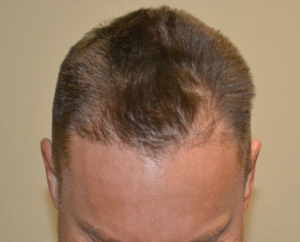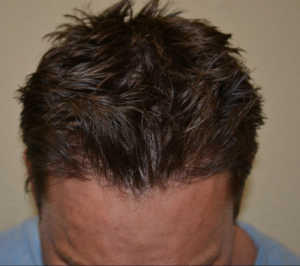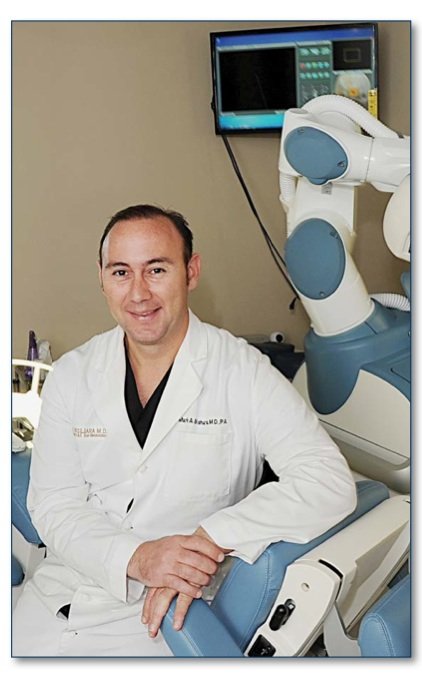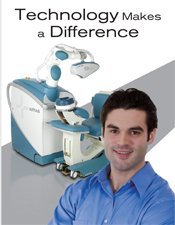Plastic surgeons all over the country are offering a shall we say “very interactive” approach to medicine.
Dr. Miami also know as Dr. Michael Salzhauer is taking the camera phone into the operating room. Want to know how a brazilian butt lift is done? Watch it via his snapchat. With 130,000 followers on Instagram and 12,000+ on Twitter, nothing about his procedures is left to the imagination.
Think its crazy? Well maybe not. More and more clients are open to bringing you in on the experience. This platform allows the next patient to get an idea of what to expect. “ This allows people to actually see what the process is like. It demystifies it so it’s a lot easier for them to take the plunge, so to speak, “ he said.
Makes sense right? One patient even said she was happy to share her story and thought how cool is it, stating I can watch my surgery later…
Want to know what your favorite plastic surgeon is doing in the O.R.? Prop your feet up and check it out from the comfort of your couch. Dr. Matthew Schulman has “several hundred thousand” followers and 450,000 views daily. That’s a lot of people interested in watching you go under the knife.
Platforms like snapchat and twitter allow the surgeon a truly interactive relationship, with not only their existing clientele, but new patients as well. Its an educational platform, in real time. What more could you ask for? Does this violate privacy and HIPAA? You bet it does, but physicians simply ask for consent and have an open dialogue on what will and will not be shared.
TO LEARN MORE ABOUT OUR COSMETIC SURGERY SERVICES, PLEASE CONTACT US (817) 473-2120 OR EMAIL APPOINTMENTS@MARKBISHARAMD.COM TO SCHEDULE AN APPOINTMENT.

There are seasons for everything, but one thing you wouldn’t expect to be seasonal is cosmetic surgery. Any plastic surgeon, however, will tell you that the spring is the season for breast augmentations and liposuction, and the season for facelifts is right after Christmas. And many other procedures are more common during certain times of the year.
When it comes to facial surgery, like face or eyelid lifts, fall or winter surgery is most common. While you should be able to face the public two weeks after a facelift, you might not really want to. You’ll have residual swelling and even a little bruising up to a month after the lift, and there’s always a chance of some odd lumps and bumps. It’s a lot easier to wear scarves or heavier makeup when it’s cold outside. When planning for cosmetic surgery, you might be pleasantly surprised at how fast you recover, but 5-10% of people have one thing or another that slows down their recovery. When planning out your schedule, you really have to plan for the worst-case scenario.
Recovery from larger procedures takes longer than recovery from smaller procedures. And older women take longer to bounce back than younger ones. And, of course, if you have significant medical problems, you have a much higher chance of a complication after surgery; you and your surgeon may decide to forgo surgery and improve your appearance with less invasive procedures that are less demanding on your body.
While some office procedures like Botox, Xeomin and Fillers, are easier to do and really don’t have seasonality, not all types of procedures are suited for the summer. Chemical peels and some laser treatments require strict avoidance of sun, so unless you live in a cave or are a vampire, you might consider having these treatments during the fall-winter months.
This Information is brought to you courtesy of Dr. Mark Bishara and The Paragon Plastic Surgery & Med Spa in Mansfield and Southlake, TX
Please visit us on our Facebook page at The Paragon Plastic Surgery and Medspa

Like good health and youth, most of us take a thick head of hair for granted — that is, until it is gone. For many people, hair transplant procedures can help bring back the appearance of a full — or at least a fuller — head of hair.
Overview of Robotic Hair Transplant Procedures
Robotic hair transplant surgery is a logical advance in the technology of Follicular Unit Extraction (FUE). The potential advantages of Robotic FUE (R-FUE) over traditional FUE procedures include:
- Increased accuracy of harvesting grafts to minimize damage to follicles
- Ability to use FUE in a wider variety of patients
- Reduced harvesting time
- Increased graft survival
Follicular Unit Extraction is a harvesting procedure where hair is removed directly from the donor region of the scalp as individual, naturally-occurring groups of 1-4 hairs. The technique consists of two main steps: 1) Separation of the follicular units from the surrounding skin, and 2) Extraction (removal) of the follicular units from the scalp.
Step one, the separation of the follicular units from the surrounding donor tissue, is a highly repetitive and labor intensive process that requires great precision. This step requires the centering of the punch over the follicular unit and the alignment of the dissecting instrument with the follicles to prevent damage. This step, which must be repeated manually hundreds to thousands of times in a typical FUE procedure, subjects the patient to significant human variability and error.
The problem associated with the initial step of separating follicular units from the surrounding tissue has been a major challenge for FUE practitioners. A significant advance towards minimizing trauma to follicular units in this first step was to divide it into two parts; sharp, followed by blunt dissection. This additional step reduces the chance of injury to the lower part of the follicles during dissection. The current robotic system is based on this concept.
Risks and Costs of Treatment
The cost of hair transplantation will depend largely on the amount of hair to be transplanted, but it generally ranges from $4,000 to $15,000. The procedure is rarely covered by insurance.
As with any surgical procedure, hair transplantation carries risks, including bleeding and infection. Other risks that can occur with hair transplants include scarring and unnatural-looking new hair growth.
Around the time new hair growth starts, some people experience inflammation or infection of the hair follicles, called folliculitis. This can be relieved with antibiotics and compresses. Another potential risk is the sudden loss of transplanted hair, called shock loss. Fortunately, this hair loss is rarely permanent.
If you are bothered by thinning hair or balding, hair transplantation can significantly improve your appearance and self-confidence. However, it is important to understand that hair transplantation is just that — transplantation of hair you already have to a place where it is more visible. It does not create new hair.
To minimize the risks and improve the success of surgery, it is important to undergo hair transplantation only if you are healthy. You should always discuss the potential risks and benefits of any surgery with your doctor.
This Information is brought to you courtesy of Dr. Bishara and The Paragon Plastic Surgery & Med Spa
The ARTAS Robotic System
The ARTAS FUE robot is an image-guided system composed of a robotic arm, dual-needle punch mechanism, video imaging system, and a user interface. Its extraction technique consists of a double-punch arrangement with an inner (sharp) punch and outer (dull) punch. The inner punch has cutting capabilities to score the upper most part of the skin and the outer punch has a blunt edge used for dissection of the follicular units from the surrounding tissue that minimizes injury to the grafts. The image-guided system allows this step to be accomplished with great precision. The patient lies on a specially designed operating table that allows access of the robotic arm to the donor area of the scalp.
The ARTAS System is an interactive, computer assisted equipment employing image guidance to enhance the quality of hair follicle harvesting. ARTAS is the first hair transplant robot to improve the most challenging aspects of Follicular Unit Extraction (FUE).
There are two common ways to treat balding including strip harvesting and follicular unit extraction (FUE). Strip harvesting is the most commonly used technique right now, and it is an efficient means of harvesting large quantities of follicles.
FUE offers less discomfort and a faster return to normal daily activities than traditional, more invasive methods of hair restoration. Performed in Dr. Bishara’s office, FUE with ARTAS moves healthy, functioning follicles to the areas of the patient’s scalp most impacted by baldness for more dramatic results. The implanted hairs develop their own blood supply, begin to grow and new hairs are seen a few months after the procedure has taken place. New hair continues to grow over the course of a full year, making the change in the patient’s appearance gradually noticeable to others. Healing time is short, and there is no resultant linear scar as happens with other methods of hair restoration. The only evidence is tiny, white scars left in the donor area, which are the same as those produced by manual FUE.

Benefits of ARTAS System
Robotic technology is used in numerous surgical and diagnostic procedures to improve the efficacy of treatments. Restoration Robotics has incorporated robotic technology into FUE resulting in the ARTAS system which is the first and only FDA-cleared technology that allows the physician to control the image-guided robot. I am able to make minor adjustments to dissection depths and angles during the extraction process ensuring my patients receive optimal results.
Before and After Pictures:


Please view more before and after pictures on our website at markbisharamd.com/robotic-hair-transplants.php#artas


WHAT IS A ROBOTIC HAIR TRANSPLANT?
Robotic hair transplant surgery is a logical advance in the technology of Follicular Unit Extraction (FUE). In Robotic FUE hair transplant procedures, follicular units are isolated using the ARTAS robotic system. The ARTAS system is a computerized, image-guided robot that automates the labor intensive process of extracting grafts. Its advantage over other FUE techniques is due to its precision and consistency in extracting grafts. All FUE procedures at The Paragon Plastic Surgery & Med Spa are performed using the ARTAS robot.
The ARTAS® Robotic System is the first and only robotic hair transplant system. Using image-guided robotics, the physician-assisted ARTAS Robotic System precisely dissects follicular units, thousands of times in a single session.
ARTAS is the very latest technology in hair restoration. Dr. Bishara is using the ARTAS System in his Mansfield and Southlake offices. This interactive, computer assisted equipment employs image guidance to enhance the quality of hair follicle harvesting. ARTAS is the first hair transplant robot to improve the most challenging aspects of Follicular Unit Extraction (FUE).
 This physician-controlled, state-of-the-art system enables the harvesting of hair follicles during hair restoration procedures. It offers numerous beneficial features, including an image-guided robotic arm, special imaging technologies, small dermal punches and a computer interface. The ARTAS System is capable of identifying and harvesting individual follicular units to implement the FUE technique. The device, guided by cameras and 3-D imaging software, can perform the dissection of hair follicles individually at a rate of up to 1,000 per hour.
This physician-controlled, state-of-the-art system enables the harvesting of hair follicles during hair restoration procedures. It offers numerous beneficial features, including an image-guided robotic arm, special imaging technologies, small dermal punches and a computer interface. The ARTAS System is capable of identifying and harvesting individual follicular units to implement the FUE technique. The device, guided by cameras and 3-D imaging software, can perform the dissection of hair follicles individually at a rate of up to 1,000 per hour.
The advantages of FUE over traditional hair transplant methods are having no linear scar in the donor area and having no post-operative limitations on physical activity. Robotic technology enables FUE to be performed with unparalleled precision.
Please visit our website at www.MarkBisharaMD.com for more information on robotic hair transplants or call our office at (817) 473-2120.






